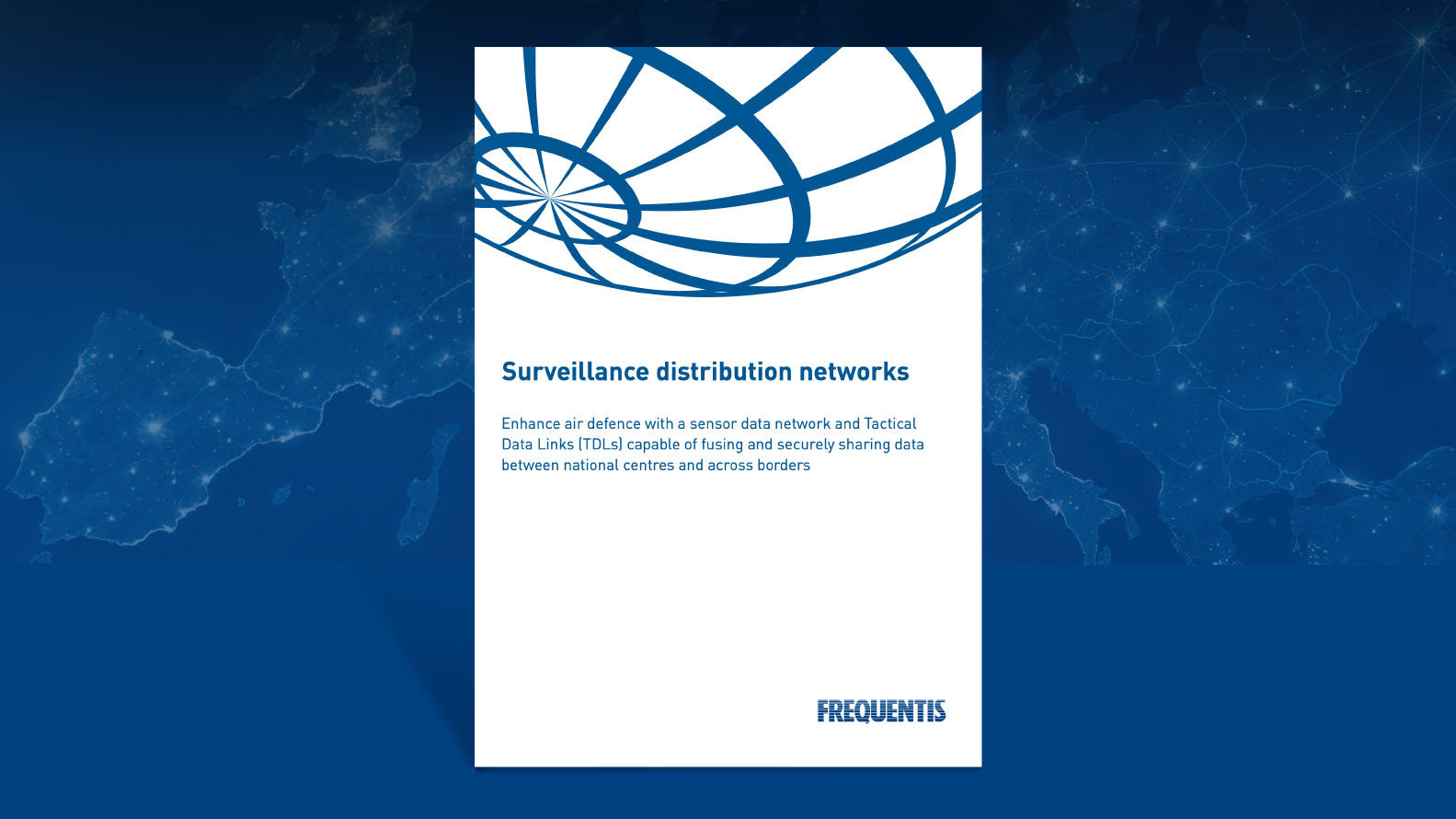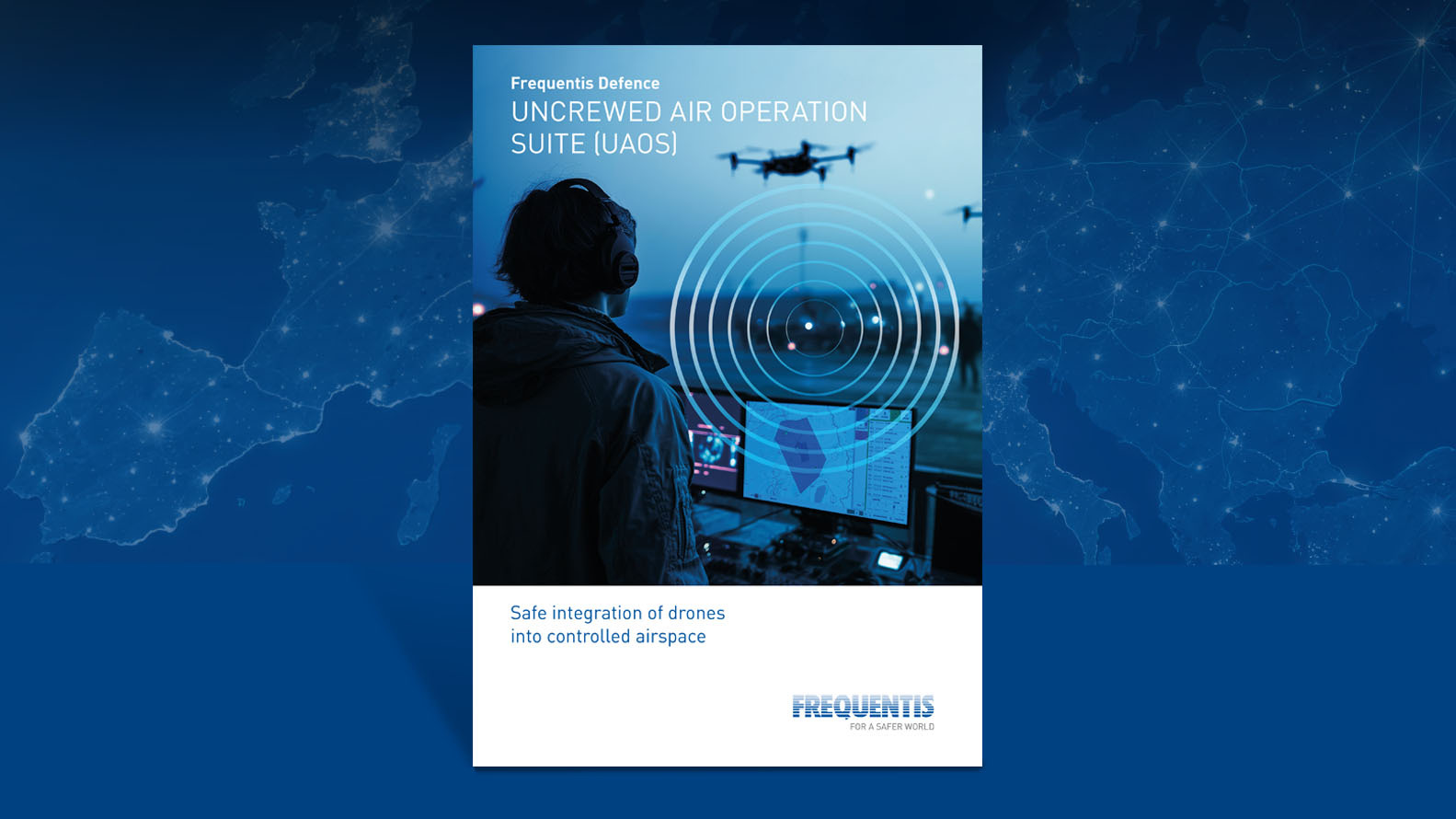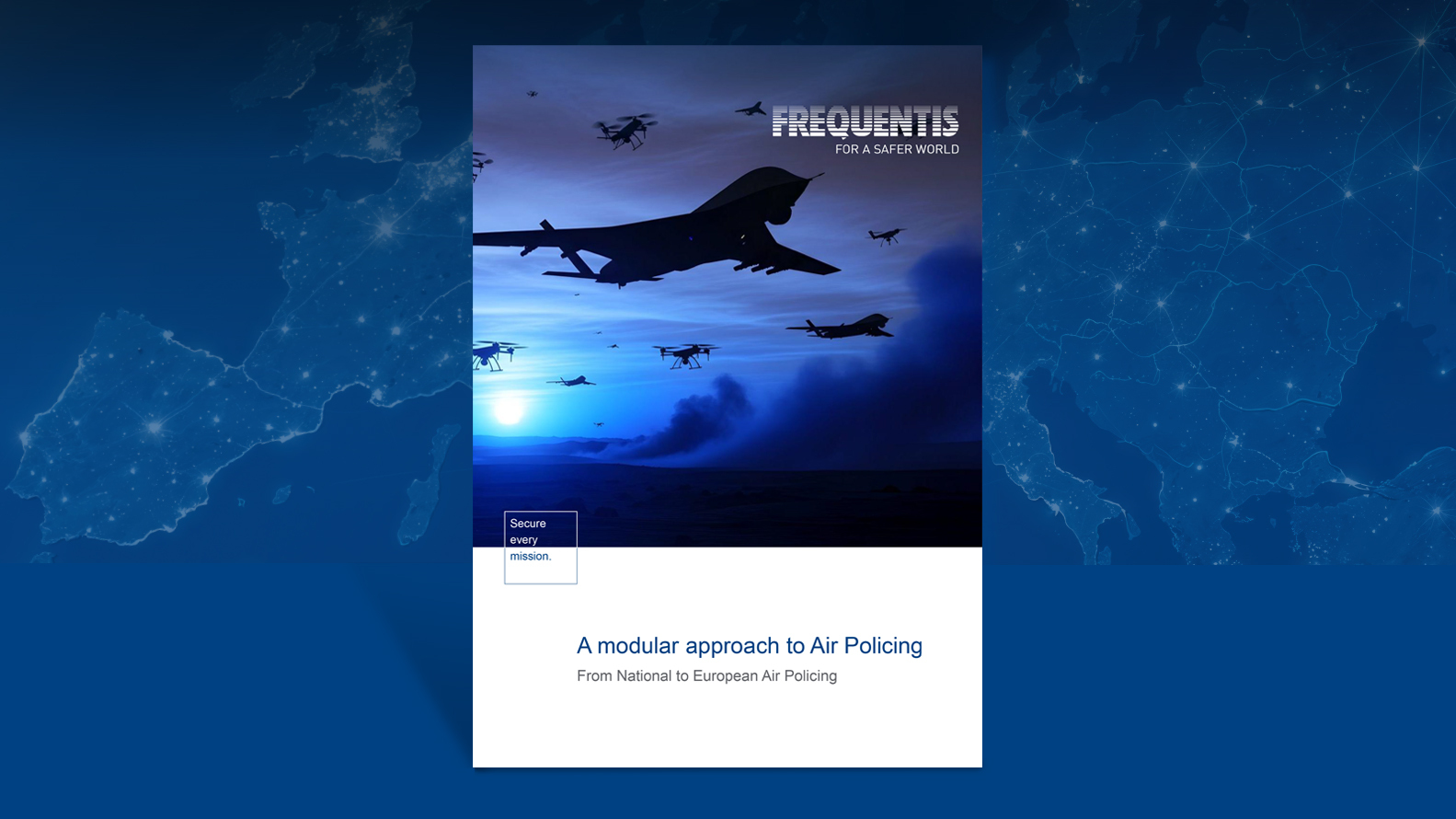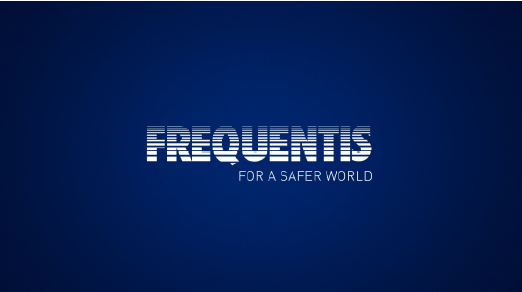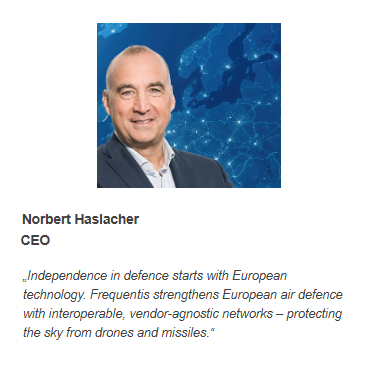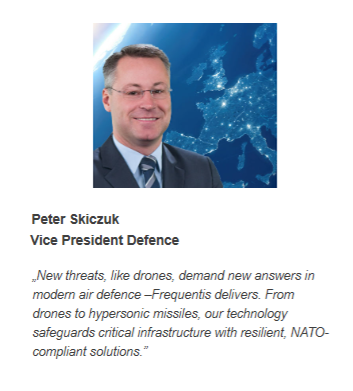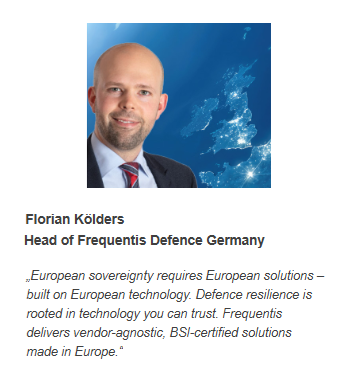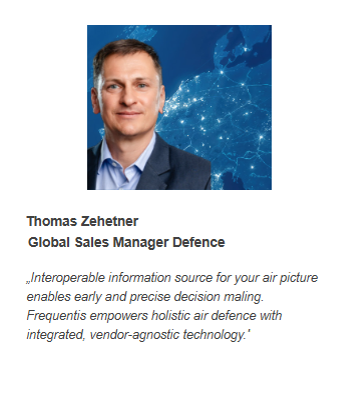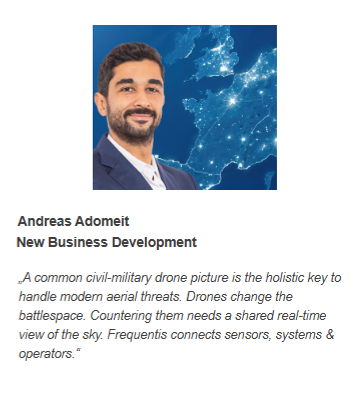Ensuring strong European defence
has never been more crucial
As airborne threats evolve – from drones to ballistic and hypersonic missiles – strengthening Europe’s airspace security
through holistic air defence networks has become essential. Frequentis – Europe’s trusted partner for mission-critical airspace management, delivering advanced data distribution, surveillance, coordination, and safe UAV/drone integration to secure sovereign airspace and strengthen a collaborative European air defence. Backed by European solution competence and neutral, vendor-agnostic technology, we connect national systems into a cohesive, independent defence network – ensuring credibility, interoperability, and strategic autonomy for Europe.
Frequentis –
empowering interoperability
across the European sky
y

Holistic Air Defence Networks
Interoperable SDN Technology maximising efficiency through greater situational awareness – independent of the user (any C2 or entity).
- • Software-defined networking technology – connecting legacy systems, new and future technologies
- • Integration of any sensors – including civil, military and tactical data links.
- • Secure, user-specific data exchange – classification, filtering, data fusion

Airspace Management
Protection of critical infrastructure is more urgent than ever. Various threats require a shared real-time view of the sky. Frequentis connects sensors, systems & operators to provide one unified air picture.
- • Multisensor Data Fusion
- • Dynamic airspace management for all users, including integration of planning & controlling data
- • Advanced Drone Identification by UTM, plus classficiation
- • Efficient Integration of multilayered defence
· Secure, user-specific data exchange – classification, filtering, data fusion
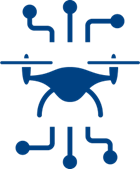
Uncrewed Air Operation Suite
Drones challenge existing defence approaches. A coordinated airspace nationally and across Europe is a prerequisite.
- • Registered pilots and drone flight plans
- • Collaboration in real-time based on accurate civil and military information
- • Shared situational awareness for command & control centers
- • Holistic end-to-end solutions including mobile clients and legal recording· Secure, user-specific data exchange – cication, filtering, data fusion
Holistic Air Defence Networks
Airborne threats are becoming faster and more unpredictable – from drones to ballistic missiles. National sensor networks are powerful, yet most end at the border. What is missing
is the secure exchange of selected data between allies.
This white paper shows how Frequentis surveillance distribution networks close that gap: fusing diverse sensor data, applying intelligent filtering, and enabling a shared situational picture.
The result: faster decisions, greater interoperability, and a decisive early-warning capability.
Uncrewed Air Operation
Modern threats are becoming faster, smaller, and harder to detect — especially with the rise of drones. Protecting national borders and critical infrastructure now requires seamless cooperation across systems and nations.
Frequentis air defence solutions enable this connection: integrating diverse sensors, networks, and command systems into one trusted operational picture.
For stronger situational awareness and a unified response – across all domains.
Learn more about how we strengthen multinational air defence collaboration in our latest focus area brief on Uncrewed Air Operation.
C2 - Airspace Management
In an increasingly complex airspace, coordination between civil and military actors is crucial. Frequentis Airspace Management solutions provide real-time collaboration, guided incident workflows, and holistic end-to-end capabilities – from mobile clients to secure recording.
Discover how unified communication supports faster decisions and safer skies. Download our latest insight paper to learn more.
Stronger together:
protecting Europe’s sky
Air defence resilience is rooted in technology you can trust. Discover
how Frequentis strengthens European defence with secure, scalable
holistic air defence networks.
European thought leadership in
holistic air defence
FAQ – How to secure sovereign airspace and strengthen
a collaborative European air defence
Frequentis holistic air defence networks
What makes Frequentis technology the “missing piece” in European air defence?
Frequentis has provided sensor data networks enabling Germany and other European countries to exchange surveillance data. This exchange is independent of sensor manufacturer, technology, and end user (e.g. C2 systems, neighbouring countries, or alliances). The Frequentis solution therefore empowers nations and civil/military entities to achieve greater situational awareness.
How does Frequentis technology contribute to a layered air defence concept?
A layered air defence requires that different systems – from VSHORAD and SHORAD to medium- and long-range assets – can all access timely, reliable tracking data. The Frequentis network solution is sensor-agnostic, decoupling information from proprietary technologies and making it available across all layers of defence. This ensures faster decisions, optimised use of resources, and greater overall resilience.
How are civil and military radar networks integrated securely and in compliance with NATO standards?
Civil and military data can be networked while remaining separated into dedicated security domains. The Frequentis solution is BSI-certified, NATO FMN-compliant and proven to enable secure cross-border data exchange. Certified domain-level gateways ensure that only authorised information is released. This selective distribution means nations remain in full control of what is shared, while benefiting from broader interoperability.
How does interoperability improve resilience against drone and hypersonic threats?
Interoperability multiplies defensive strength by combining sensor input from multiple domains and across wide geographic areas. This redundancy ensures that even if one sensor is degraded, the network maintains coverage. The result is more reaction time, earlier detection of fast-moving threats, and improved accuracy in decision-making – a crucial advantage against drones and hypersonic systems.
What safeguards protect sensitive military data in multinational cooperation?
Frequentis applies a layered security approach. Certified gateways operate at domain boundaries, filtering data by geography, altitude or classification. Additional encryption and sanitisation options allow nations to tailor information exchange to their own security policies. This ensures sovereignty is preserved while still enabling operational effectiveness.
What benefits do national command centres gain from unified situational awareness?
By integrating diverse sensor data into one network, national command centres receive a richer, more accurate air picture. This consolidated view enhances coordination, reduces the risk of blind spots, and provides faster access to critical intelligence – enabling better decision-making in both national defence and joint operations.
Why trust Frequentis as a European partner?
With over 75 years of experience in mission-critical communication and surveillance, Frequentis combines deep technical expertise with trusted relationships across Europe’s armed forces. Our vendor-independent, NATO-standard solutions are already in daily operation, making Frequentis a reliable partner for strengthening Europe’s collective defence.
Uncrewed Air Operation Suite
How does Frequentis enable safe integration of unmanned systems into controlled military airspace?
Frequentis systems are field-tested with the German Armed Forces, integrating military and civil UAVs even during live operations. The platform supports scalability and flexibility, allowing different branches to coordinate limited airspace efficiently and maintaining situational awareness.
What role does Frequentis play in coordinating manned and unmanned missions within complex airspace?
Manned and unmanned missions are integrated inside airspace management by Frequentis. Within the UAO Suite based on the common operational picture manned and unmanned aerial vehicles can be deconflicted and also operations sychronised (e.g. manned-unmanned teaming).
Why is a unified air picture essential for situational awareness?
Due to the use of uncrewed systems in every situation (civil and military) the situational picture is increasing in his complexity. Crewed and uncrewed aerial vehicles have to be deconflicted and coordinated in every scenario. To maintain situational awareness it will be necessary to share and coordinate an common airspace picture within any crewed and uncrewed assets.
C2 – Airspace Management
How does Airspace Management improve cooperation between civil, military, and federal authorities?
Airspace Management acts as a catalyst for interagency cooperation by establishing shared situational awareness, interoperable command structures, and standardised procedures. It transforms fragmented national airspace operations into a coordinated, sovereign defence framework, enabling civil aviation, military forces, and federal agencies to respond collectively to aerial threats. This cooperation ensures faster decision-making, lawful escalation, and unified incident handling.
What makes the Frequentis system architecture unique in supporting interagency incident management?
Frequentis systems are built on a modular, service-oriented architecture that supports seamless integration across agencies. Real-time interoperability, guided workflows, and secure communication channels allow civil, military, and federal actors to collaborate efficiently. The architecture enables shared operational pictures, automated escalation, and legally compliant documentation, making it ideal for complex, multi-domain incident management.
How does shared situational awareness accelerate decision-making when seconds count?
Shared situational awareness ensures that all actors, from air traffic controllers, federal authorities to military interceptors, operate from the same real-time picture. This reduces uncertainty, enables parallel tasking, and supports predictive coordination. In high-stakes scenarios, it shortens decision cycles from minutes to seconds, enhancing mission effectiveness, response speed, and operational safety.
What technologies ensure that communication and data exchange remain secure and legally documented?
Frequentis employs end-to-end encryption, certified gateways, and secure data exchange platforms to protect sensitive communications. Legal compliance is ensured through audit trails, consent management, and adherence to standards like GDPR, NIS2, and NATO FMN. These technologies guarantee confidentiality, traceability, and sovereignty in multinational defence cooperation.
How does the Frequentis Component Framework ensure scalability and investment protection for airspace management missions?
The Frequentis Component Framework serves as a scalable C2 platform for airspace management – a modular baseplate on which functions such as UTM or C-UAS can be flexibly deployed. Its use of COTS components, agile development, and modular architecture ensures long-term adaptability and cost-efficiency. It enables integration of civil and military data sources into a unified air picture, safeguarding investments while enhancing operational readiness.
About Frequentis
Frequentis Group, founded in 1947 and headquarted in Vienna, is a global supplier of communication and information systems for control centres within the safety-critical environment.
Frequentis operates a worldwide network of representatives in more than 50 countries and is deployed at more than 40,000 operator working positions in around 150 countries.
With deep cross-industry experience in public safety, civil aviation, defence, maritime and public transportation markets, the company has driven innovation and achieved many "industry firsts".
